Casting Processes at Talos Art Foundry
Talos Art Foundry casts bronze sculpture using the lost wax technique (cire perdue). Lost wax casting was first used by the Ancient Egyptians around 2500BC and the technique remains largely unchanged.
This detail from the tomb of Rekhmira at Luxor dated 1500BC shows foundry workers stoking a charcoal furnace using bellows tied to their feet and lifting a crucible of molten bronze from the fire using long poles much as we still do today.
